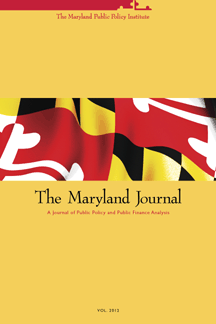Maryland's budget process is flawed, economist says
Originally Aired on WBAL TV 11 News
Maryland state lawmakers rely on a special committee to decide how much the budget can grow each year. Eileen Norcross, a senior research fellow at George Mason University's Mercatus Center in Arlington, Va., said she believes the Maryland General Assembly should abolish its Spending Affordability Committee, saying its guidelines aren't working.
In a report called "The Appearance of Fiscal Prudence," Norcross detailed why she believes Maryland's budget would be a third of its current size if the state relied on spending guidelines used by 28 other states.
She said Maryland's committee ignores its own rules and operates more like a spending target than a cap.
For the past decade, Maryland's budget-balancing process has started with a gaping structural deficit of more than $1 billion this year alone.
"The Spending and Affordability Committee (was) established to control spending in the state of Maryland, and at the same time, they've overseen the structural deficit," Norcross said.
Seventeen lawmakers and two civilians comprise the committee. The governor and presiding officers of the General Assembly frequently tout how they are holding the line on spending by not exceeding limits recommended by the committee.
"In some years, they would set a criteria for spending growth, let's say income growth, and when that amount didn't seem to fit with what they wanted to spend, they simply found another way to justify it, saying, 'Capital gains will be robust this year,' or 'There is growth in the business cycle,'" Norcross said.
Norcross said she poured over 30 years of reports submitted by the committee since its inception in 1982. In 2010, Norcross said the committee admitted the process wasn't working.
Norcross cited one of the reports as saying, "The combination of huge mid-year spending reductions, massive federal assistance and extensive reliance on one-time supports makes it impossible to clearly establish a basis for calculating a limit without arbitrary judgments about what should be in or out."
"They are frustrated with this growing structural deficit in Maryland. They know they need another process, another approach to spending discipline in the state," Norcross said.
The General Assembly's presiding officers disagree.
"It is working because it gives you a barrier to go against," Senate President Mike Miller said.
"I think the Spending Affordability Committee is an appropriate tool that sets the guidelines for where your budget needs to be when you finish the session," House Speaker Michael Busch said.
For 28 years, Norcross said, the committee proposed an average spending increase of 5 percent. Only in the past couple of years has it dipped to 0.7 percent, or level spending -- but never cuts.
The committee's recommendations only cover 66 percent of the state budget. It does not consider federal funds capital expenditures or the Transportation Trust Fund.
Norcross questioned the committee's subjective decisions tied to gaming revenue. Norcross said she believes the General Assembly should replace the committee with a tax-and-expenditure limit model used by 28 other states. That model limits spending to the sum of population grown and inflation.
"It works in conjunction with other rules, such as a balanced budget, a line-item veto or a super-majority requirement for tax increases," Norcross said.
Norcross pointed to the state of Colorado for use as a model example that could work for Maryland.
She said cities, such as Baltimore, could also benefit from adopting a strict mathematical rule to limit spending based on the increase in population and inflation.
Meanwhile, this year, the General Assembly failed to produce a revenue package by the end of the regular legislative session. Lawmakers are preparing for a special session to rework the state's spending plan and chip away at the perpetual budget deficit.
To see the video of Norcross' interview with WBAL TV 11 News, please click here.






